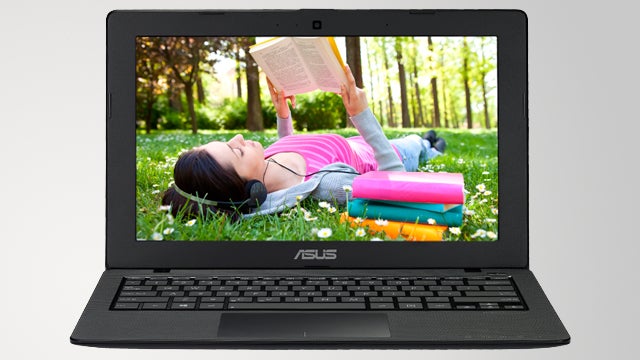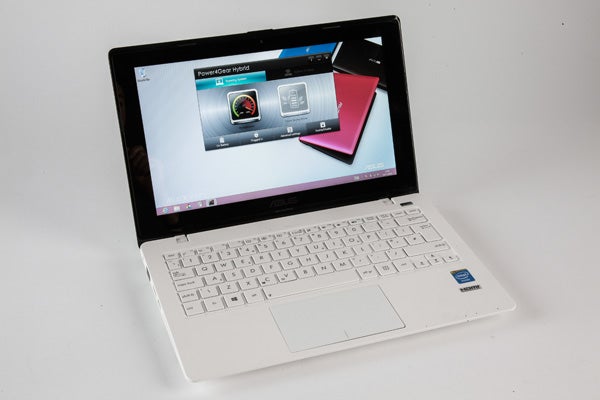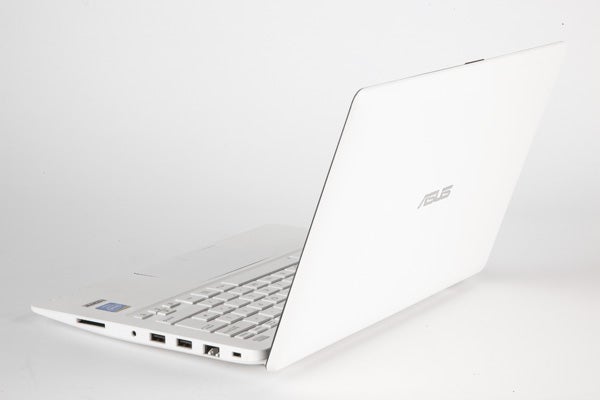Asus X200CA Review - Performance, Heat & Noise, and Battery Life Review
Performance, Heat & Noise, and Battery Life
A £300 11.6-inch touchscreen laptop that's cheap and mostly cheerful

Sections
- Page 1 Asus X200CA Review
- Page 2 Performance, Heat & Noise, and Battery Life Review
- Page 3 Keyboard, Touchpad and Verdict Review
ASUS X200CA – Performance
With an Intel Celeron chip and no solid state drive, we weren’t expecting great things from the Asus X200CA, but considering its low price point it’s pretty reasonable. Although it lags occasionally (and actually locked up temporarily a couple of times for us when we tried to do too much in Chrome) there’s only so much you can expect at this price.
On the metrics that count, it posts similar scores to more expensive laptops we’ve assessed. In PCMark 07, the X200CA posted a score of 1,871 – that’s low compared to the big beasts we’ve reviewed such as the Alienware 14 (6,009, but over £1,200 dearer), but in the same ballpark as the Asus X550CA (1,717 and £30 more) and V550C (1,839 and £200 more). It even gives our favoured £599 Samsung Activ Book Lite a run for its money, with its score of 2,120.
The scores are similar in Geekbench 3, with the X200CA scoring a low 2,294 — similar to the X550CA (1,934), V550C (2,430) and Samsung Activ Book Lite (2,194). Though again, for clarity, the super pricy Alienware 14 scored 12,509, so it’s not competing at the top of the league. Indeed, these results make the Asus technically slower than many top end smartphones such as the Nexus 5 (2,715) and iPhone 5S (2,553).

3D performance is as limited as you’d expect from a Celeron backed budget laptop with Intel HD graphics. 3D Mark gave it 17,486 and 12,020 in its Ice Storm and Ice Storm Extreme benchmarks respectively. Once again, these scores are wholly consistent with the three budget laptops outlined above, all of which come in between £30 and £300 more expensive, so the X200CA certainly punches above its featherweight specs.
That said, we should once again reiterate this is just ahead of our modest expectations, and you shouldn’t bank on it for anything other than light browsing and work duties. For a real world test of its gaming prowess, we downloaded and installed Burnout Paradise and found that it was just about playable in 1366 x 768 on low detail. Anything more recent will struggle, though: in the Unigene Heaven benchmark, it managed an average frames per second of 4.8 on the basic test at 1,366 x 768 resolution: beyond unplayable.
One final positive though: despite having a standard 5,400rpm hard drive, the boot up times from cold for the X200CA are pretty decent: 19 seconds from cold (albeit with a distinctly average 52 from a restart).
Asus X200CA – Heat & Noise
In day-to-day browsing, video viewing and word processing, the X200CA gets surprisingly warm to the touch. It’s never hot, but definitely noticeable, especially along its left hand side. The fans are also audible, though not distractingly so — in a busy office environment we had to put our ear pretty close to hear anything, and even then it was a low hum. If you’re in an otherwise silent environment, you’ll notice it when you switch off, though.
During our gaming tests we found that the heat on the left hand side increased significantly and even the keyboard was becoming hot to the touch. The fans also got that bit louder, to compensate for the additional heat generated. While it’s unlikely you’ll tax it this hard that often, flash video and adverts are bound to case a little bit of fan noise and heat.

Asus X200CA – Battery Life
In our standard battery tests — a mixture of video, browsing and word processing at 40% screen brightness — the X200CA lasted a minute shy of three hours before needing a recharge. Not terrible, but not very good either. The other budget Asuslaptops mentioned previously were closer to three and a half hours and the Samsung Activ Book Lite impressively managed just shy of six hours.
A 30-minute charge returns 25% of the battery life, which equates to 45 minutes of real world usage, so best keep that charger on you.
How we test laptops
Unlike other sites, we test every laptop we review thoroughly over an extended period of time. We use industry standard tests to compare features properly. We’ll always tell you what we find. We never, ever, accept money to review a product.



